I toured an abandoned castle in an overgrown ghost town deep in the Australian rainforest. Take a look around the magical place.
Monica Humphries

The author at Paronella Park.Monica Humphries/Insider
- Paronella Park is home to an overgrown rainforest, moss-covered structures, and an abandoned castle.
- I wandered through the 13-acre ghost town in Queensland, Australia.
After two days on Australia's Great Barrier Reef, I traded in sunny oceans for shady rainforests and embarked deeper into Queensland, Australia.
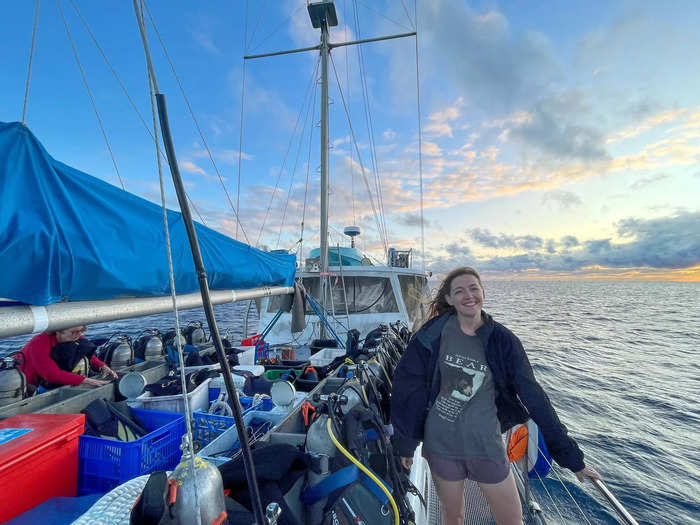
The author on a sailboat over the Great Barrier Reef. Monica Humphries/Insider
But I wasn't searching for lush vegetation or curious creatures in Queensland. My destination was Paronella Park.
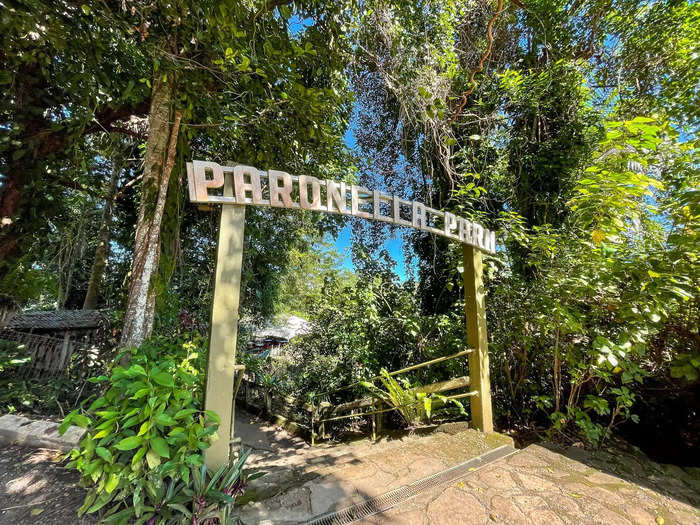
An entrance sign to Paronella Park. Monica Humphries/Insider
Source: Paronella Park
Paronella Park is a 13-acre tourist attraction with tropical plants, lush greenery, and an RV park. But it's perhaps best known for the overgrown structures — including an abandoned castle — that dot the property.
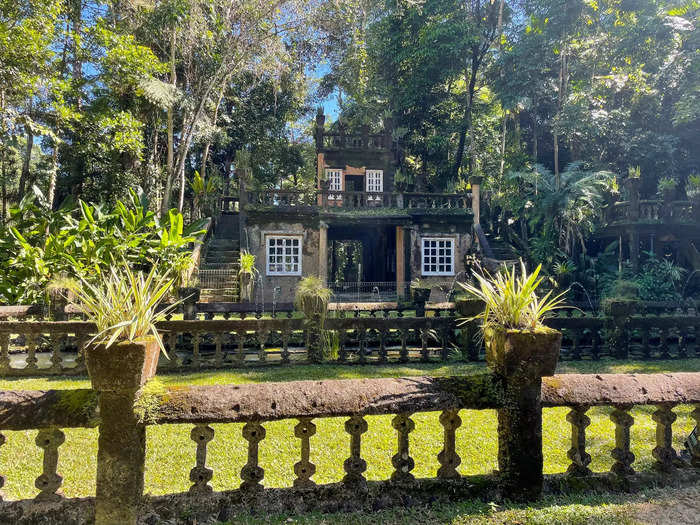
A view of the castle at Paronella Park. Monica Humphries/Insider
The park was a hotspot for Queensland locals in the 1900s, but after a series of cyclones, floods, and fires, the site was abandoned and Australia's rainforest naturally reclaimed the land.
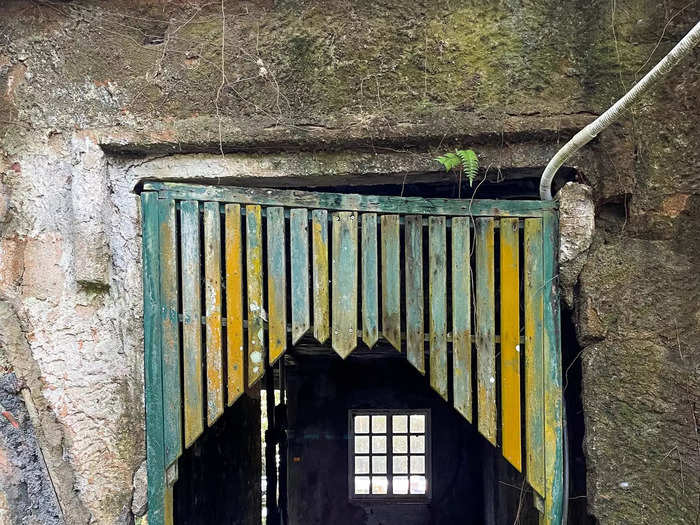
A window looking into an abandoned building at Paronella Park. Monica Humphries/Insider
That was until Mark and Judy Evans purchased the property in 1993. The couple restored the crumbling buildings and opened it up to tourists.
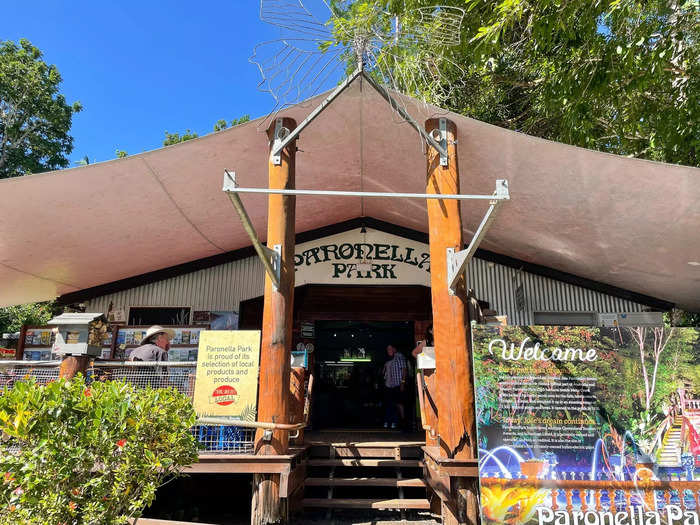
The entrance of Paronella Park. Monica Humphries/Insider
Beyond tours of ruins, Paronella Park also runs a campground with RV spots, camping spots, and six rentable tiny homes.
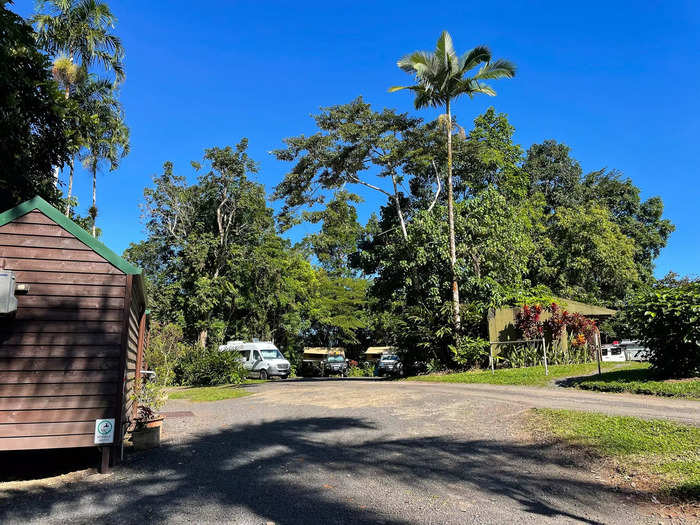
The RV park at Paronella Park. Monica Humphries/Insider
Today, people arrive at Paronella Park to explore the lichen-covered structures and learn about the property's rise, fall, and rise again. Last July, I was one of those visitors.
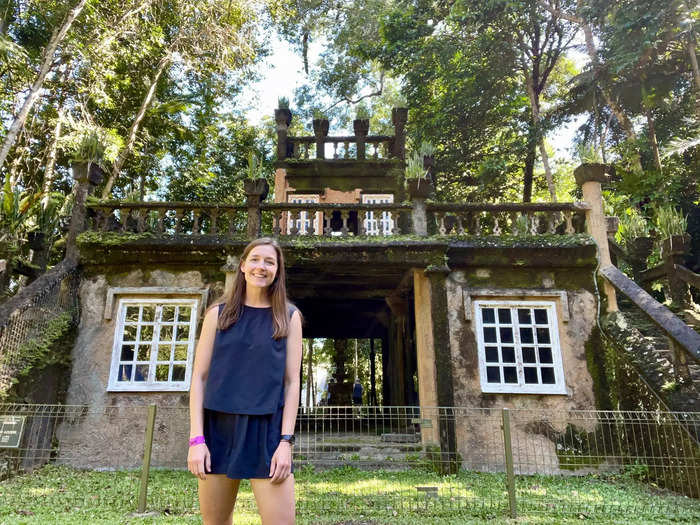
The author at Paronella Park. Monica Humphries/Insider
Fascinated by abandoned places, I booked both a tour of the park and spent a night in a tiny home at Paronella's RV park.

The exterior of the tiny house at Paronella Park. Monica Humphries/Insider
Admission into the park, which includes both a daytime and nighttime tour cost $38 USD, and my tiny house cost $69 USD.
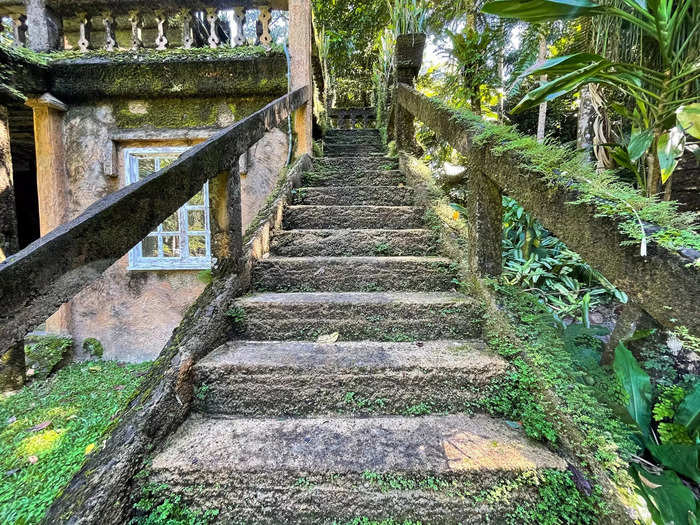
Stairs lead to the second story of the park's refreshment rooms. Monica Humphries/Insider
As my taxi pulled up to Paronella Park, I felt an initial twinge of disappointment. After visiting more than a dozen ghost towns, I'm used to deserted buildings and seclusion. Here, the parking lot was full of tourists buzzing about.
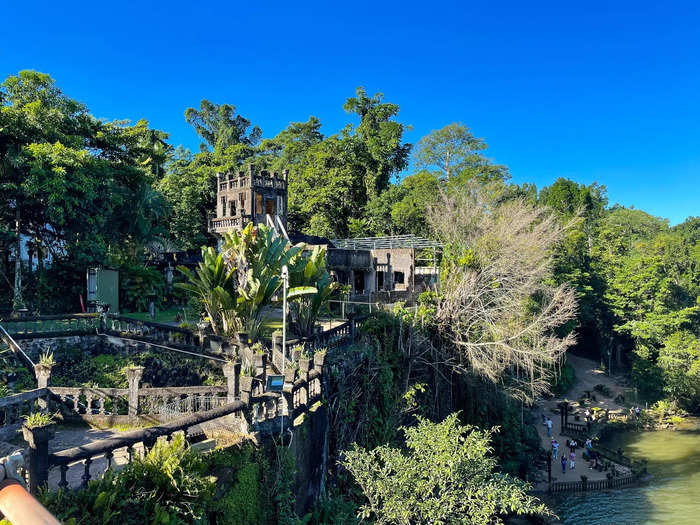
A view of Paronella Park. Monica Humphries/Insider
But by the end of my one-night trip, I understood why so many people visit the magical place. And I still found a few moments of solitude.
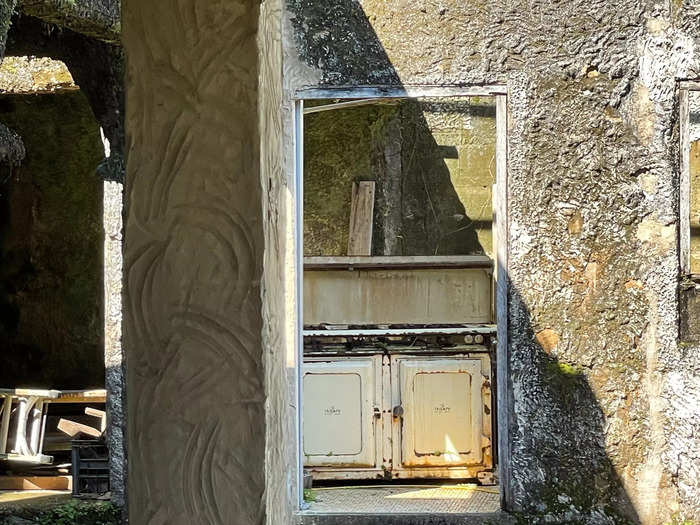
Kitchen appliances inside one of the abandoned structures at Paronella Park. Monica Humphries/Insider
Arriving in mid-afternoon, I stopped at the park's ticketing window, which is where campers can check into the RV park as well. Here, I learned that housekeeping was cleaning my tiny house, so I joined a tour of the property.
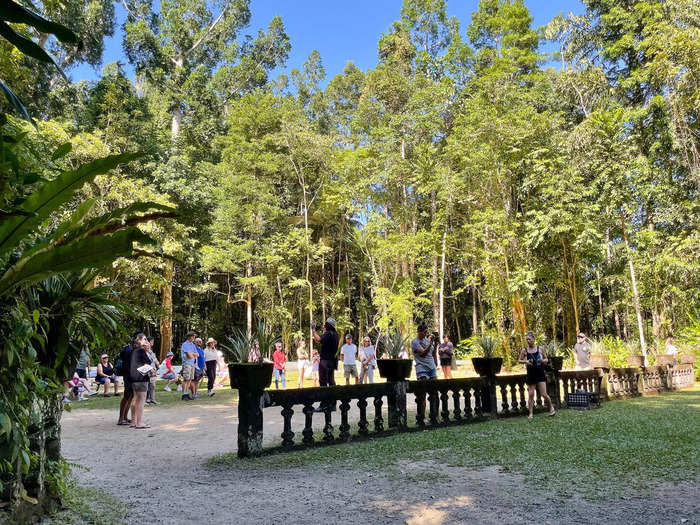
A tour group at Paronella Park. Monica Humphries/Insider
On the 30-minute daytime tour, a guide took us around the 13-acre property.
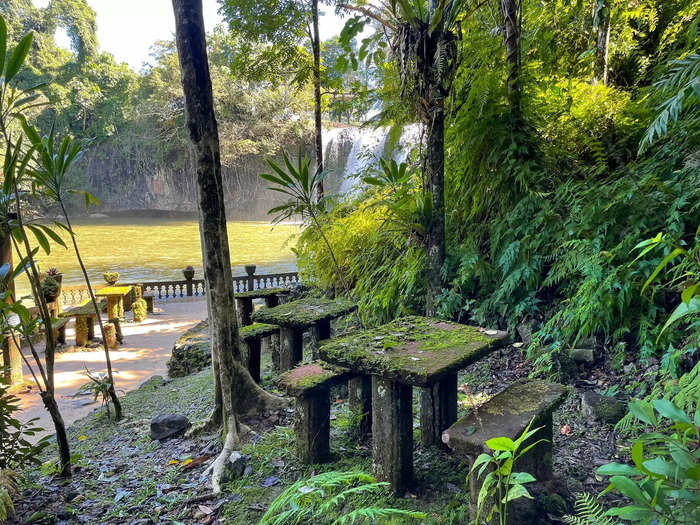
A cement table covered in green moss. Monica Humphries/Insider
The tour guide told us about the park's history, and José Paronella, who traveled from Spain to Queensland in 1913 to work in the region's sugarcane farming. After 11 years, he returned to Spain and married Margarita Soler.
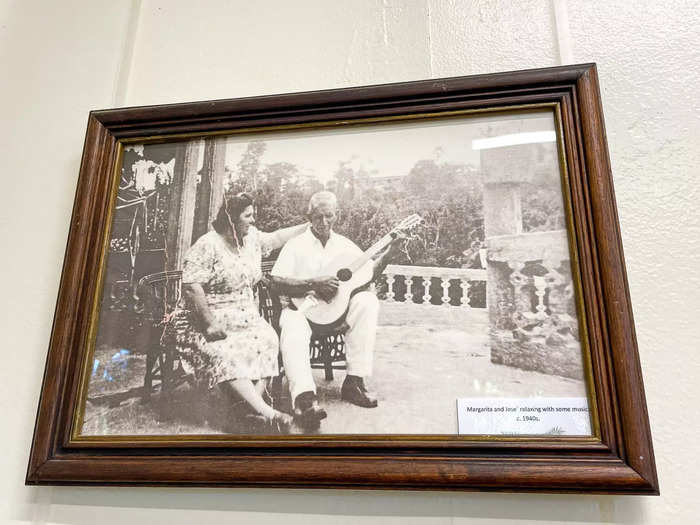
José Paronella and his wife Margarita. Monica Humphries/Insider
Our tour guide said that José returned to Australia with Margarita, and in 1929, purchased 13 acres of land in Mena Creek for £120. He dreamed of recreating the castles he grew up seeing in Catalonia, Spain, and got to work building Paronella.
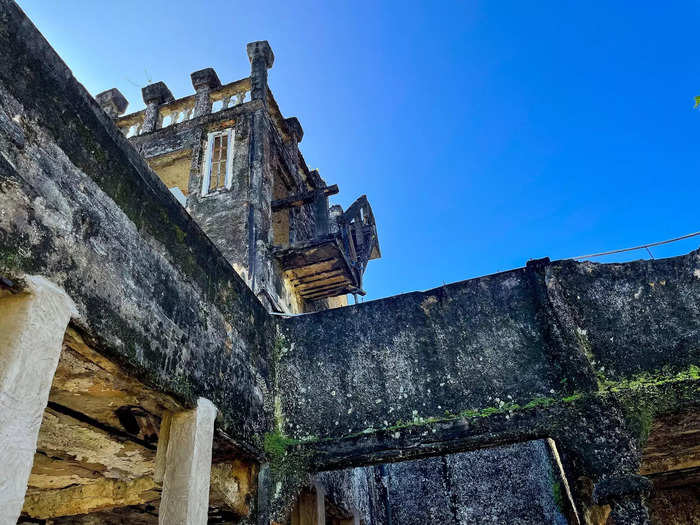
A view of the castle at Paronella Park. Monica Humphries/Insider
We stopped at the grand staircase, which I learned was the first structure built at Paronella Park. The staircase descends to Mena Creek and the Mena Creek waterfalls, where builders used the river's sand to create concrete for the park's structures, our guide said.
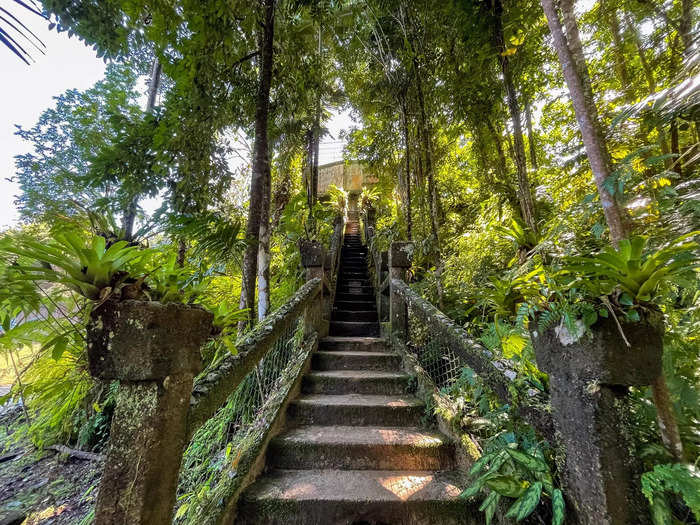
The grand staircase at Paronella Park in Queensland, Australia. Monica Humphries/Insider
José didn't stop at the staircase, our tour guide told us. He built a castle, a family home, a ballroom, tennis courts, refreshment rooms, bridges, a picnic area, and hundreds of cement planters.
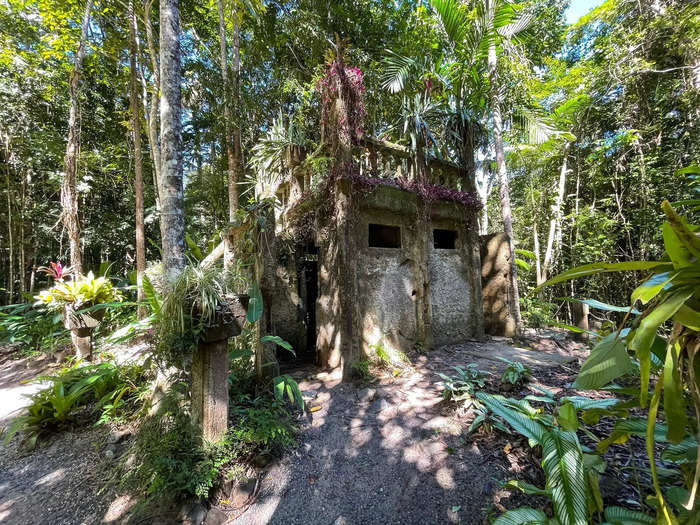
A structure at Paronella Park. Monica Humphries/Insider
Beyond buildings, José installed Queensland's first hydroelectric power plant in 1933, which supplied power to the park, our guide said.
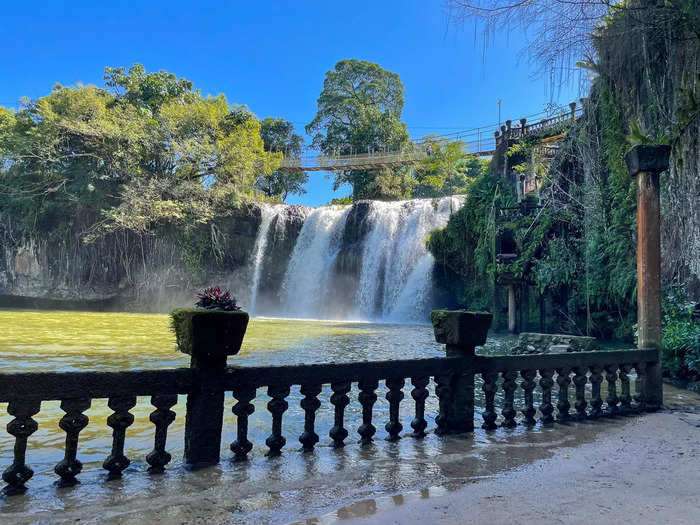
Mena Creek Falls. Monica Humphries/Insider
In 1935, Paronella Park opened to the public, the guide said. People would flock to the area for its pools, parties under a grand disco ball, and film screenings.
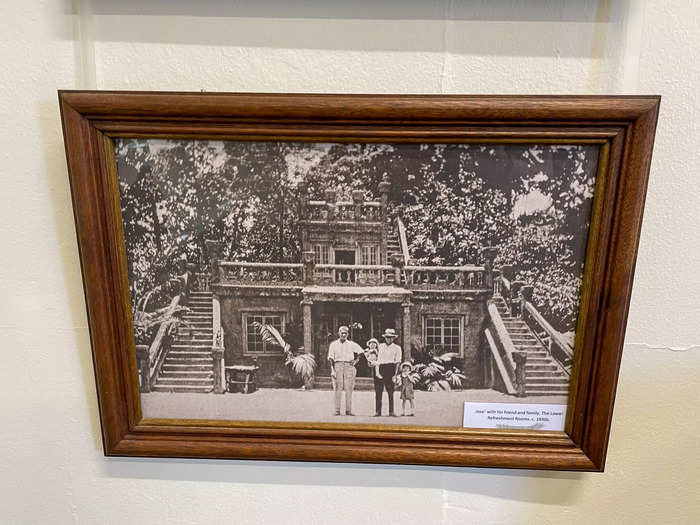
José Paronella with friends and family in the 1930s. Monica Humphries/Insider
As our group continued exploring the property, we stepped inside a castle, which connected to a now open-roof ballroom. At one end, a crumbling stage remained.
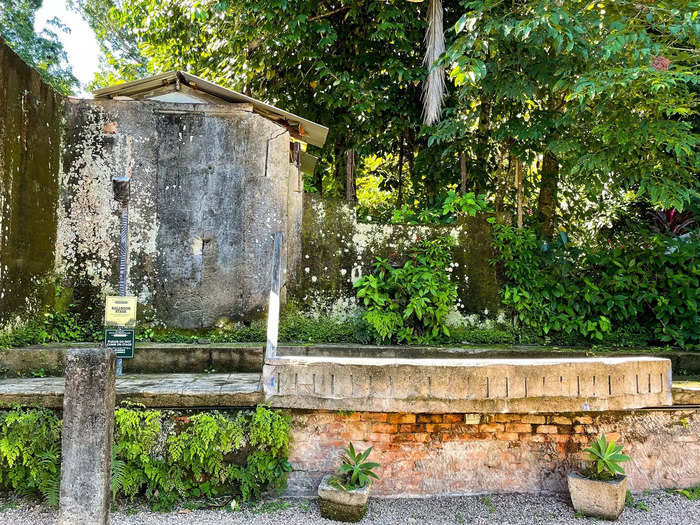
The stage inside the ballroom at Paronella Park. Monica Humphries/Insider
At the other end, a castle's tower hovered over the building and a disco ball hung from supports.
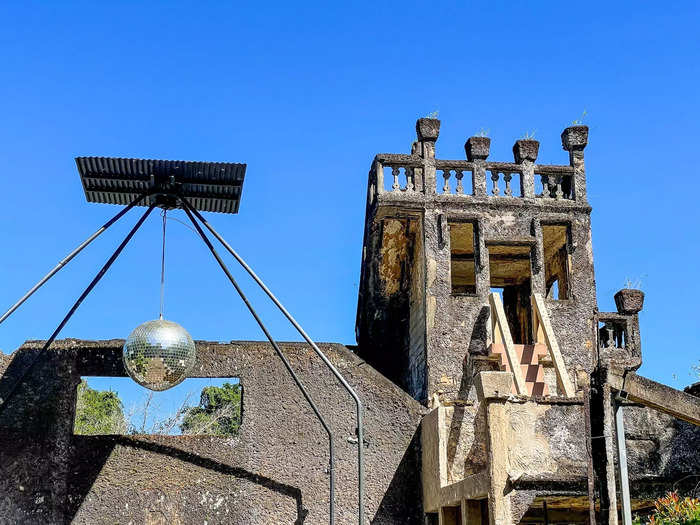
A view of the castle at Paronella Park. Monica Humphries/Insider
We passed by José and Margarita's home, which today is a museum. The whitewashed building is the only stone structure, the guide said. Everything else José built was made of concrete.
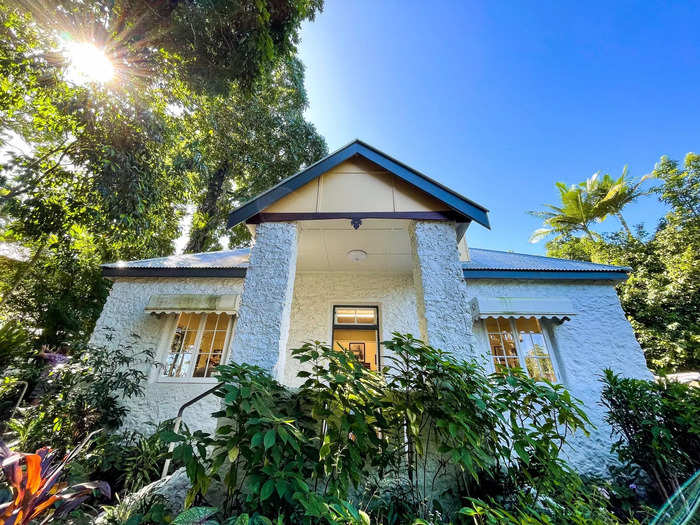
The couple's original house. Monica Humphries/Insider
The guide added that José's home mimics a European-style cottage, which is different from the rest of the Spanish Moorish design throughout the park.
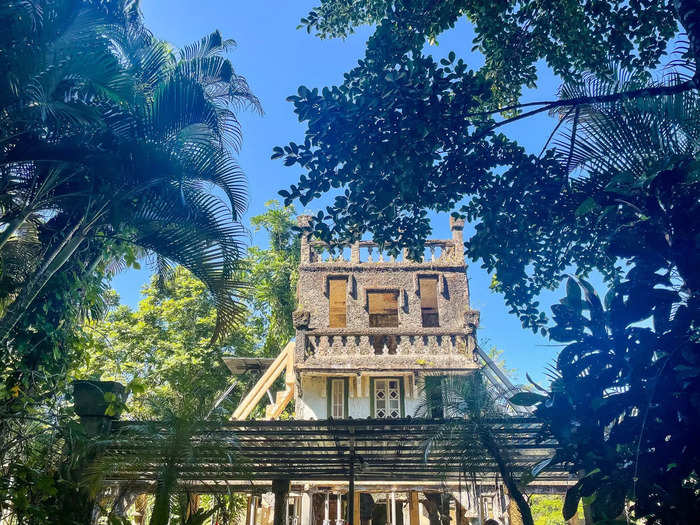
A view of one of the buildings at Paronella Park in Queensland, Australia. Monica Humphries/Insider
Finally, the group went deeper into the rainforest to our last destination: the refreshment rooms.
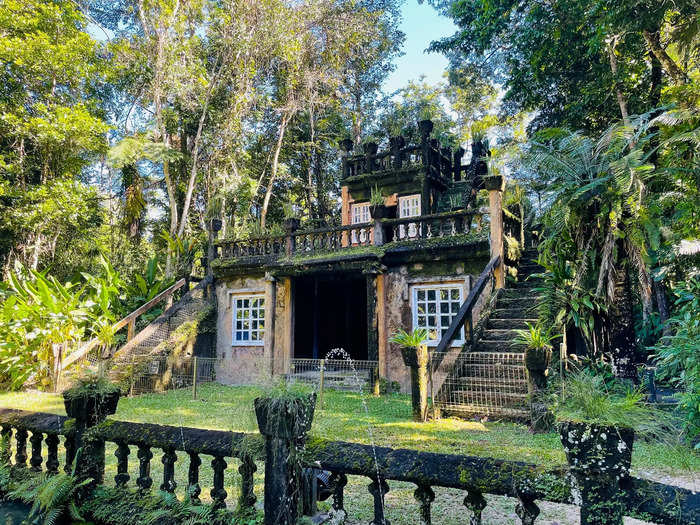
The lower refreshment rooms at Paronella Park. Monica Humphries/Insider
The two-story structure was once home to a café by the pool. Our guide said that when the park first opened, it once had tables covered in checkered tablecloths and lights strung around the room.
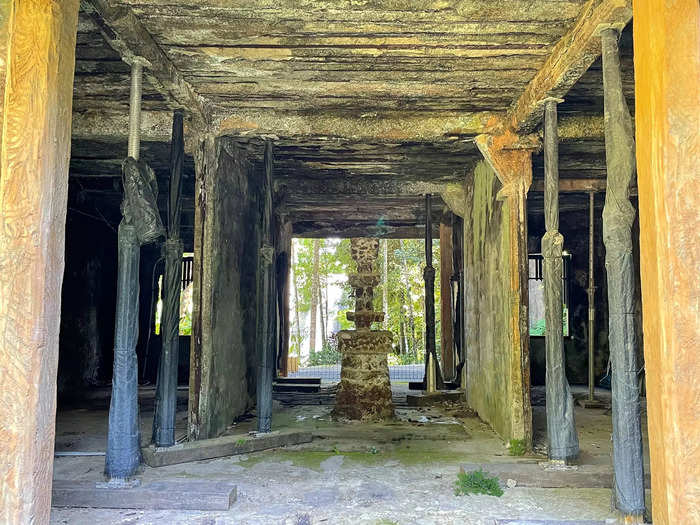
The interior of the refreshments room today. Monica Humphries/Insider
On the second story was a balcony and a small kitchen, the guide said. Here, spectators would watch tennis matches at courts once stationed in front of the refreshment rooms.
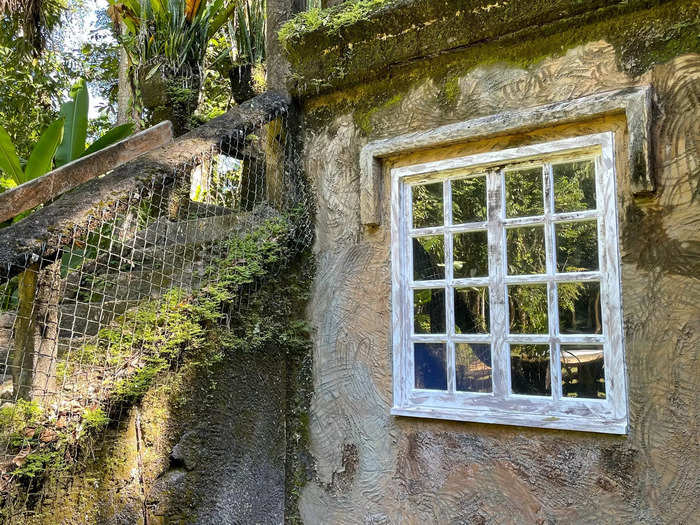
A window of the old refreshments room. Monica Humphries/Insider
As I walked around the buildings, I saw crumbling changing cubicles lining a wall. In the 1900s, people would arrive at Paronella wearing formal clothes and use the stalls to change into swimsuits for the nearby pool, my guide said.
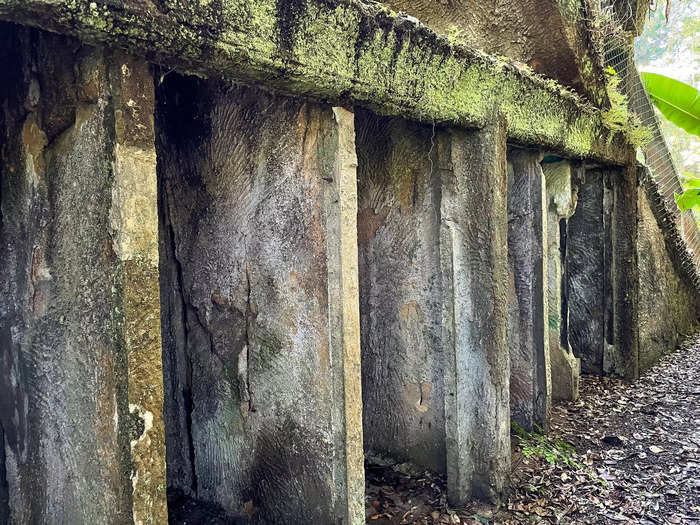
Changing cubicles lined one side of the refreshment rooms at Paronella Park. Monica Humphries/Insider
I also learned about the property's downfall. In 1948, José died of cancer, the guide said, and in 1967, 1972, and 1974, floods hit Paronella Park. In 1979, a fire hit, and a cyclone struck in 1986, he told us.
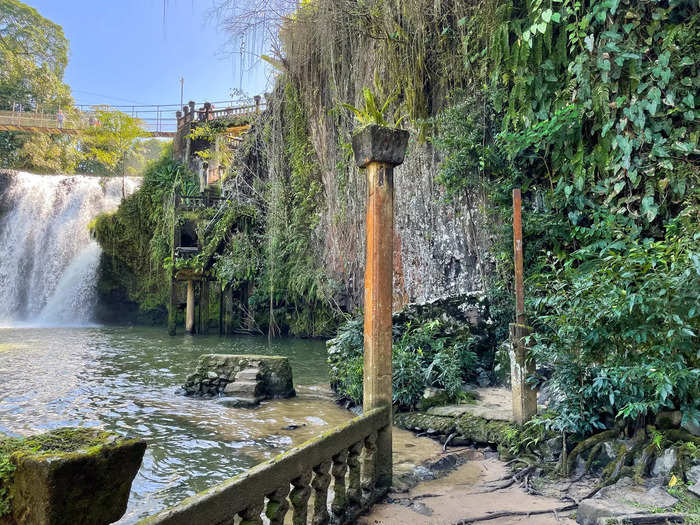
Water's edge at Paronella Park. Monica Humphries/Insider
Ultimately, the park was sold out of the Paronella family in 1977 and sat empty for years, the park's website states.
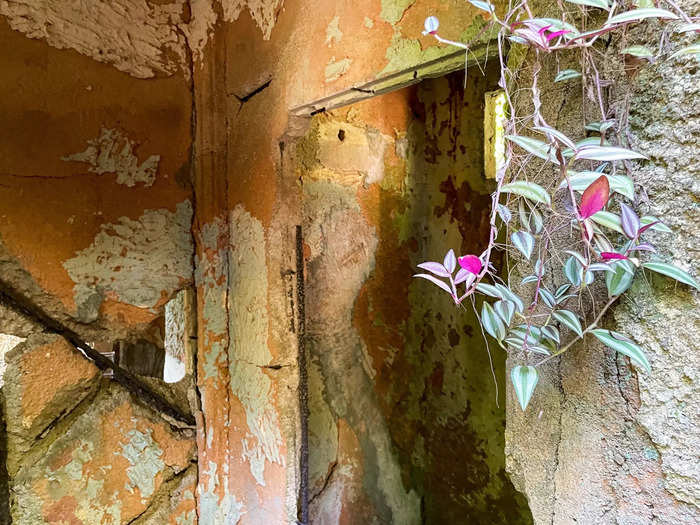
Paint peels from the wall of a building at Paronella Park. Monica Humphries/Insider
Source: Paronella Park
In 1993, when Mark and Judy Evans purchased the land, they opened an RV park, began restoring the remaining structures, and reopened it to the public, Mark Evans told Insider.
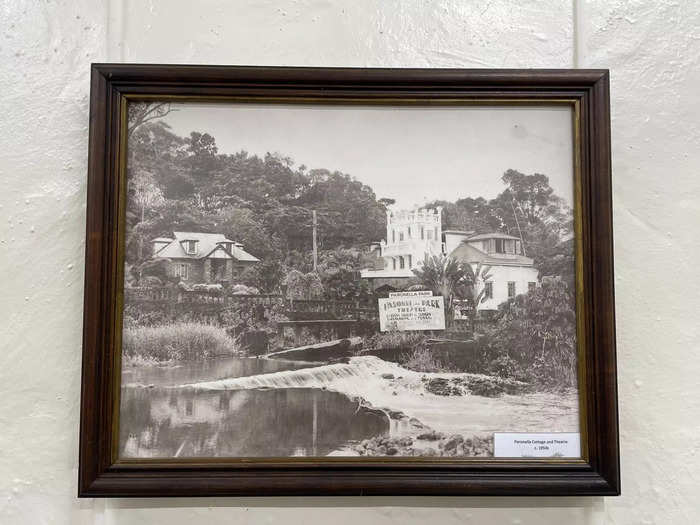
Paronella Park in the 1950s Monica Humphries/Insider
"It was just the most amazing thing," Mark said about visiting Paronella Park for the first time. "I can compare it to that lovely phrase, 'we were lost for words.'"
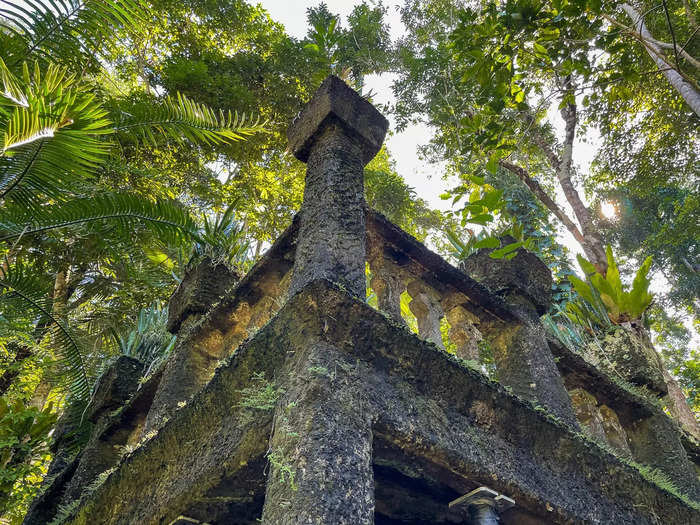
A corner of a cement building at Paronella Park. Monica Humphries/Insider
The couple got straight to work preserving the remaining buildings and reopening the space, Mark said. Each week, hundreds of people visit Paronella Park and discover José's dreams.

All across Paronella Park are building supports and restoration projects. Monica Humphries/Insider
After my tour, I had free rein to roam the property.

Another building at Paronella Park. Monica Humphries/Insider
I went deeper into the rainforest and spotted a forest of Kauri pine trees, which José planted years ago. According to our guide, José planted more than 7,000 trees on the property.
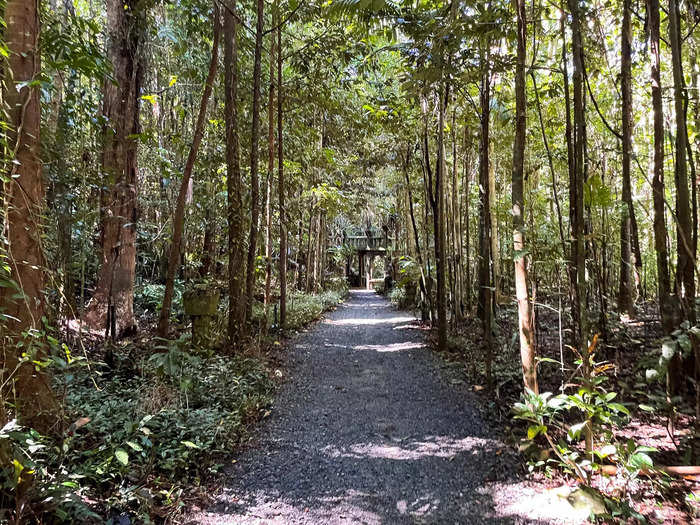
A dirt path at Paronella Park. Monica Humphries/Insider
I came across more overgrown structures that served as everything from kitchens to changing cubicles, according to signs on the property. Even the bathrooms were breathtaking.
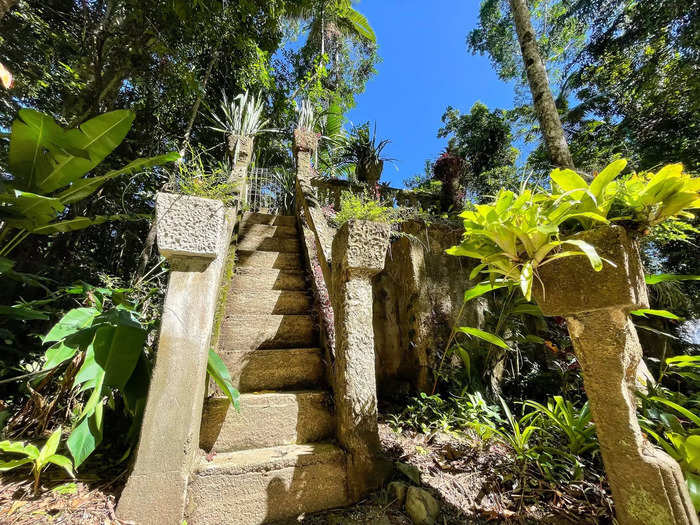
An old toilet block at Paronella Park. Monica Humphries/Insider
Away from the main area, the crowds vanished, and I explored Paronella Park in solitude. A few random tree branches breaking spooked me, but overall, I felt at peace as I searched for the cement structures that sprinkle the property.
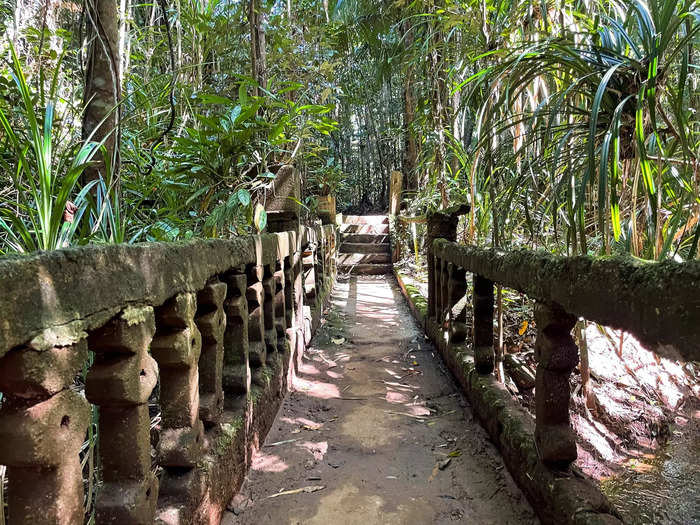
Cement railing at Paronella Park. Monica Humphries/Insider
After another half hour of soaking in Paronella Park, I climbed back up the grand staircase, clutching onto the lichen-covered cement handrail, and made my way back to the ticketing desk to pick up my keys to my tiny house.
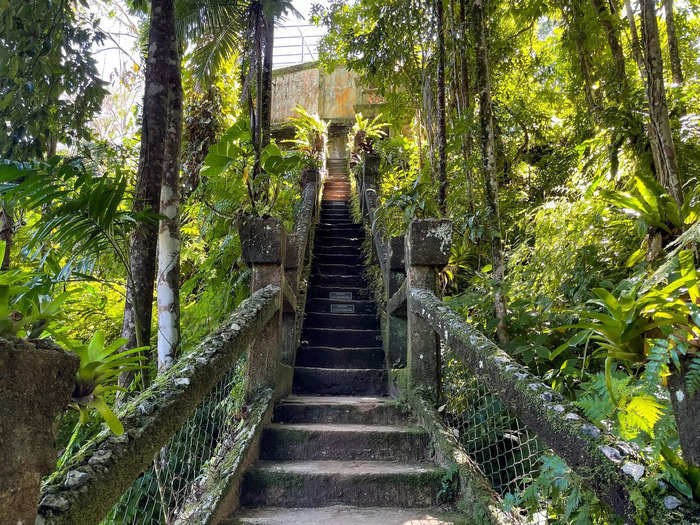
A view of the grand staircase at Paronella Park. Monica Humphries/Insider
In my tiny house, located in the property's RV park, I thought about José's story and his dream of building a castle in Australia's rainforest. I thought the result was magical.
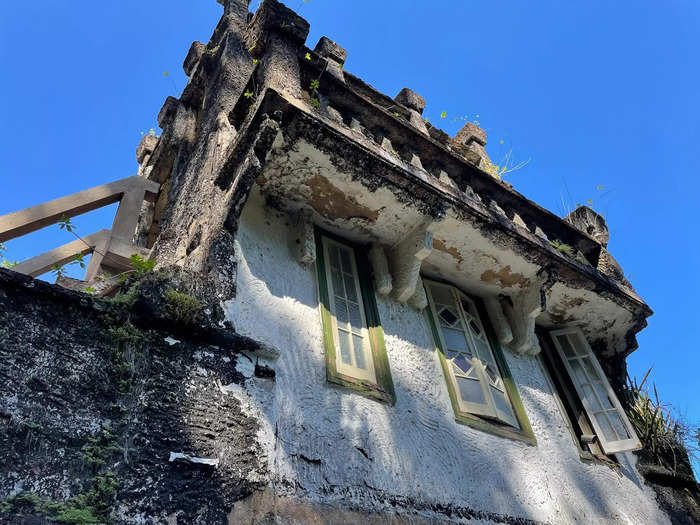
A section of Paronella Park that is being restored. Monica Humphries/Insider
As I fell asleep listing to the sounds of the rainforest, I was thankful I got to spend a night in José's dream, which luckily hasn't been completely abandoned.
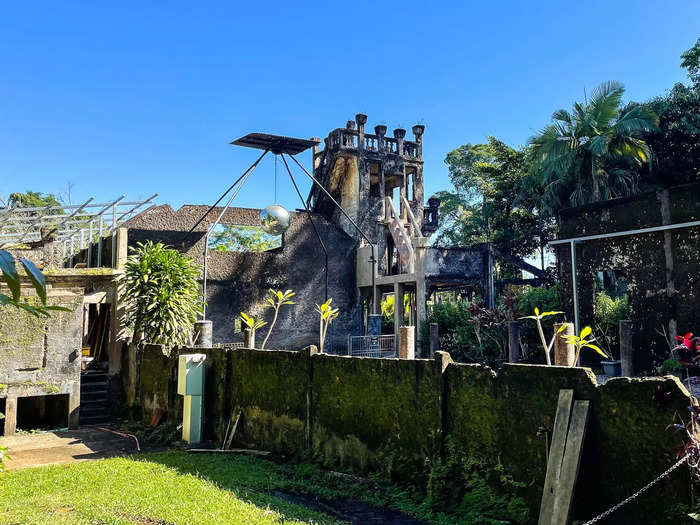
The castle and ballroom at Paronella Park. Monica Humphries/Insider
Popular Right Now
Popular Keywords
Advertisement